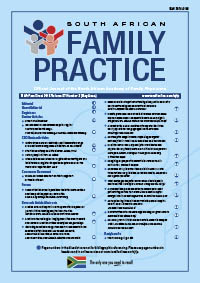WHASA consensus document on the management of the diabetic foot
Keywords:
management, diabetic foot, consensus document
Abstract
The management of the diabetic foot is often a costly endeavor due to the magnitude of foot complications that can arise when not managed within the multi-disciplinary team. The International Working Group on the Diabetic Foot (IWGDF 2011) states that: “A strategy that includes prevention, patient and staff education, multidisciplinary treatment of foot ulcers, and close monitoring can reduce amputation rates by 49-85%”.1 This document is based on the work done by the IWGDF and fully endorses International Consensus Document on the Management and Prevention of the Diabetic foot (2011).1 Other Guidelines that play a predominant role in adapting the International Guidelines to the South African and also African context are comprehensively detailed in the SEMDSA guidelines (2012),2 NICE guidelines (2008),2 Wound Bed Preparation Guidelines (2011),3 SIGN guidelines (2010)4 and the International Best Practice Guidelines: Wound Management in Diabetic Foot Ulcers (2103).5 Wound Care for the Diabetic Foot poses unique challenges due to the predisposing risk factors as well as the psychological impact on both the patient, family and care givers. It is also noted that a Diabetic Foot Ulcer (DFU) is a pivotal event in the life of a person with diabetes and is seen as a clear marker of serious under lying disease. Rapid wound deterioration is inevitable if wound care interventions are not done early to avoid ultimate amputation.3,5 The purpose of this document is to describe the basic principles in managing the diabetic foot by focussing on both prevention and ulcer treatment within the African context.
Section
Guidelines
By submitting manuscripts to SAFP, authors of original articles are assigning copyright to the South African Academy of Family Physicians. Copyright of review articles are assigned to the Publisher, Medpharm Publications (Pty) Ltd, unless otherwise specified. Authors may use their own work after publication without written permission, provided they acknowledge the original source. Individuals and academic institutions may freely copy and distribute articles published in SAFP for educational and research purposes without obtaining permission.

